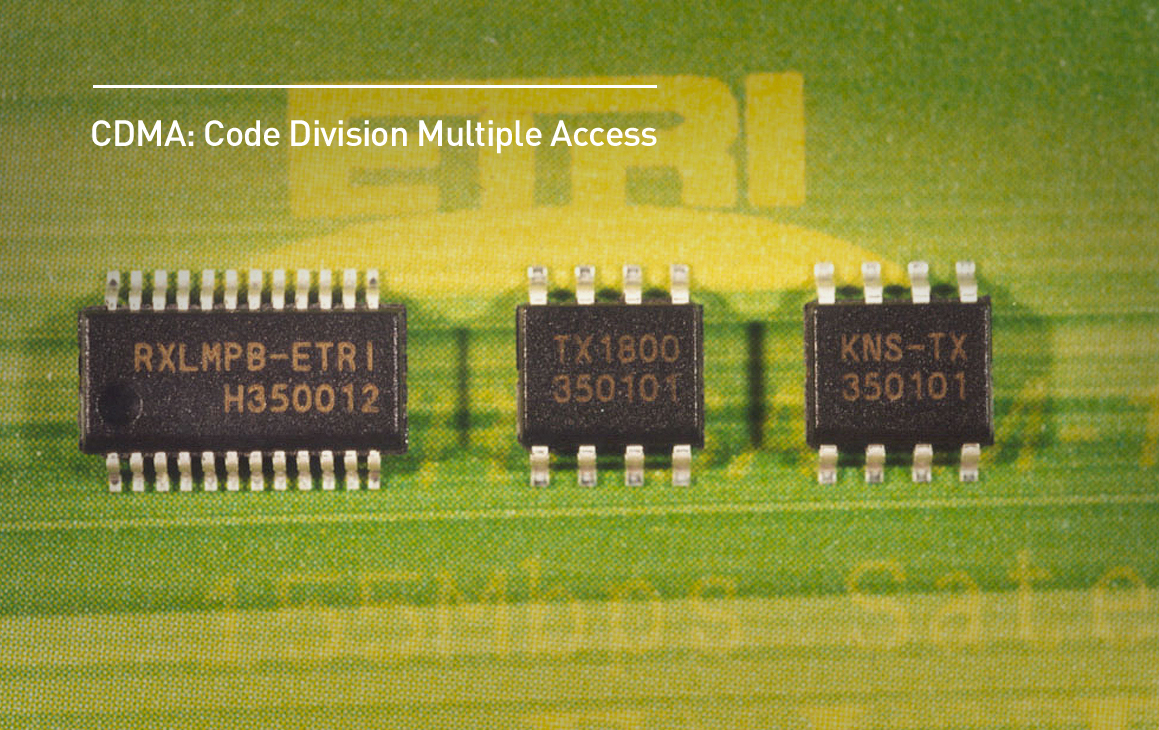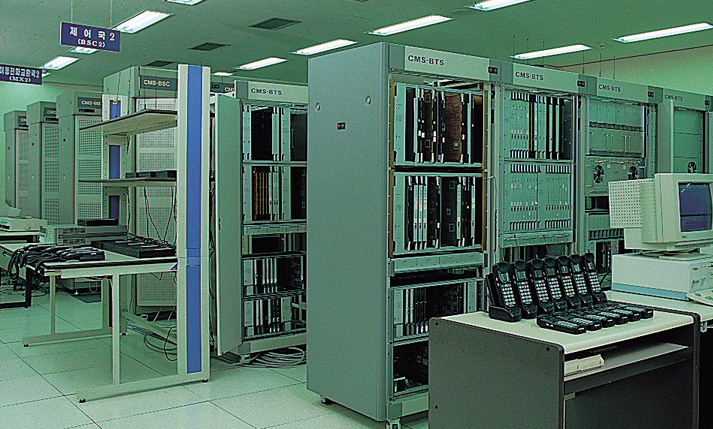

In commemoration of the 70th anniversary of Korean independence from Japan,
the Ministry of Science, ICT and Future Planning(MSIP) has announced 70 representative achievements in science and technology,
selected by the Representative Achievement Selection Committee,
consisting of the chairperson of the National Science and Technology Council and experts from various sectors.
Among the 70 achievements that contributed to realizing the “Miracle on the Han River” and
leading the national economic growth are included TDX-1, DRAM, CDMA, and WiBro developed by ETRI.
The following provides some details on the history of CDMA.
CDMA, a Novel Technology
In 1988, ETRI proposed to the government a “project to develop digital wireless communications system”
in an attempt to advance Korea’s mobile communications industry.
The primary research target set by ETRI was TDMA(Time Division Multiple Access), for which research
and development was underway based on IS-54 TDMA(US TDMA), a standard in the United States.
Later, the CDMA RTS(Roving Test System) developed by Qualcomm,
a US communications technology company, opened the chapter of CDMA history.
CDMA featured ten times better compared to the analog and three times better than
TDMA methods in subscriber capacity, and provided better sound quality than TDMA as well.
Although CDMA had not been commercialized yet, it possessed potential as a new emerging technology.
If CDMA were used for system development, it would be possible to end technological
reliance upon developed countries and make an independent entry into global markets.
Therefore, ETRI persuaded the reluctant government, academia, and industries and
signed an agreement with Qualcomm for joint CDMA technology development on May 6, 1991.

The Looming Challenge of ETRI
The development process did not proceed smoothly, however. In July 1993,
the situation grew worse when ETRI and Qualcomm disagreed over exchange methods.
Whereas Qualcomm wanted packet switching, ETRI insisted on circuit switching.
Packet switching involved the use of the newly emerging ATM(Asynchronous Transfer Mode) exchanger,
while ETRI was able to develop circuit switching by modifying some of its functions based on a TDX Exchanger.
ETRI’s decision was made in consideration of largely TDX-based switching networks in Korea.

Beat the Deadline… Delivered the First CDMA Call
ETRI took every measure to shorten the development period, including notably
the introduction of PERT(Program Evaluation Review Technique) and weekly reporting.
The institution also pursued independent R&D endeavors based on the time switch method.
Without relying on the data provided by Qualcomm, ETRI made not only
a circuit diagram for hardware, but also a block design description for software.
The outcome was the KCS (Korean Cellular System)-1, a combination
of the TDX-10 Exchanger held by ETRI and a mobile testing system.
With additional functions and redesigning, ETRI later manufactured the KCS-2,
a pilot product that succeeded to make the first call on April 17, 1994.
It was the first mobile call delivered through a radio signal between a device and the main system.
The following May, CDMA was designated as a standard for Korean digital mobile communications system.
In two months, the United States, a leading country in communications technology,
followed suit and accelerated its commercial services.

World’s First CDMA Commercialization
Just two months after the first call, the commercial model CMS-1 also succeeded with a test call,
an achievement obtained three months earlier than the original development schedule.
In October 1994, a call between devices for automobiles(mobile station to mobile station) was successfully tested.
Three businesses in the communications industry continued their independent efforts
for product development in their respective field, and all of them succeeded with development.
Consequently, the Mobile Communications Technology Development Project Group conducted
a certification test for commercial models developed by businesses.
It notified companies of about a thousand items for the system test
and held a certification test, the final stage for commercialization.
As a result of testing involving roughly a thousand items,
the call success rates of developer companies recorded 98 percent, well over the 95-percent threshold.
This achievement was an outcome of five years of hard work and determined endeavors.
On June 9, 1995, a demonstration for commercial test calls using CDMA was held
at COEX, Seoul, ETRI and Korean companies became the first in the world
to successfully test the commercialized CDMA, proving their extraordinary technological competitiveness.
The successful commercialization of CDMA was announced to the world at the TELECOM show
held in Geneva, Switzerland, and both Korean and international media spread
the news about Korea’s commercialization of the CDMA technology accomplished within a short term.
Since the successful development, the CDMA method began to be commercialized
through Korean systems in 1996, rapidly reducing Korea’s external
reliance in terms of mobile phone equipment and device business.
By the end of 1996, all 1.02 million mobile devices sold within Korea were made by domestic companies.
Even Motorola acquired a Korean small company to develop and manufacture CDMA devices in Korea.
Consequently, CDMA laid a foundation for Korea to switch from Importer to Exporter of mobile technology
and to become a global leader in the communications industry.













